Fuzzy Duck
Well-Known Member
Nirvana - Blue Mystic
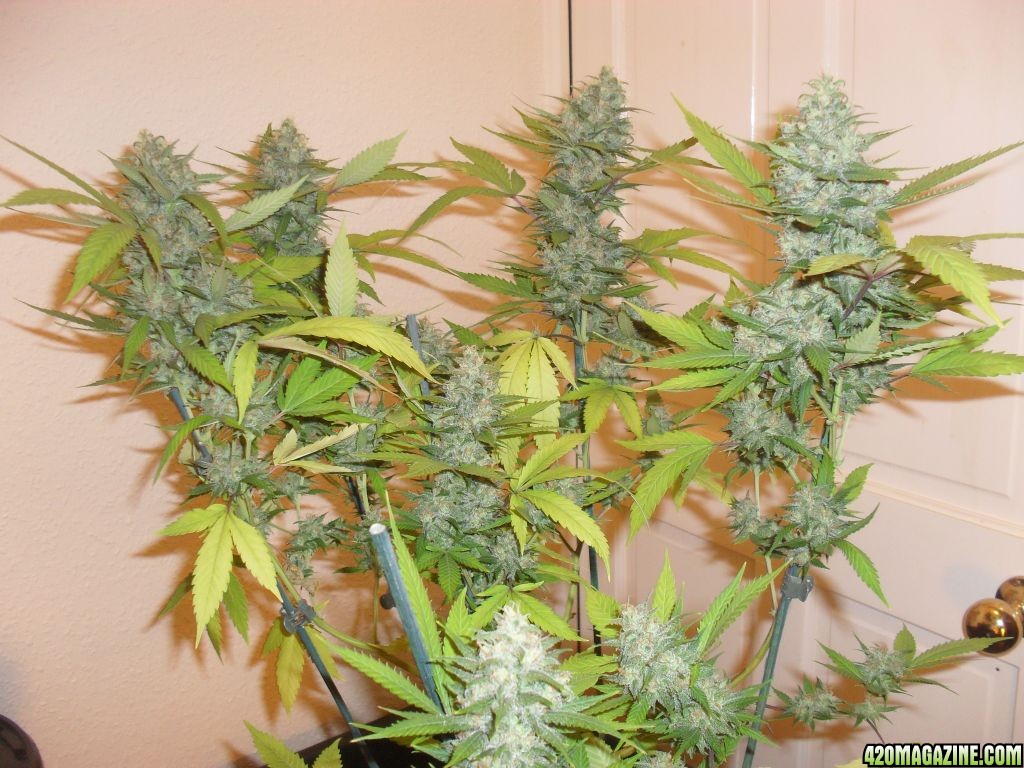
Well here goe's another journal with some slight changes to my soil mix, i'll see how this pans out over the next few months !
The new soil mix... in a 100cm by 100cm tray which made it slightly easyer to work out what was needed to be honest as most stuff comes in applications per meter square.
The tray contains a total of 25 litres of compost which is a mixture of 75% spent/used biobizz all mix, 25% farmyard manure, 500g of volcanic rock dust & 135g of bone meal for 4 X 6 litre airpots.
3 litres of water was applied & mixed very well & left to sit in an old kitchen bin to cook for a few weeks.
Cooking you may ask ? well with bone meal, volcanic rock dust & other stuff you may use to improve your soil for growing plants... it often states apply 4 weeks prior to planting !
This is so that it can begin to break down & not be so damn hot for those young tender plants you wish to grow
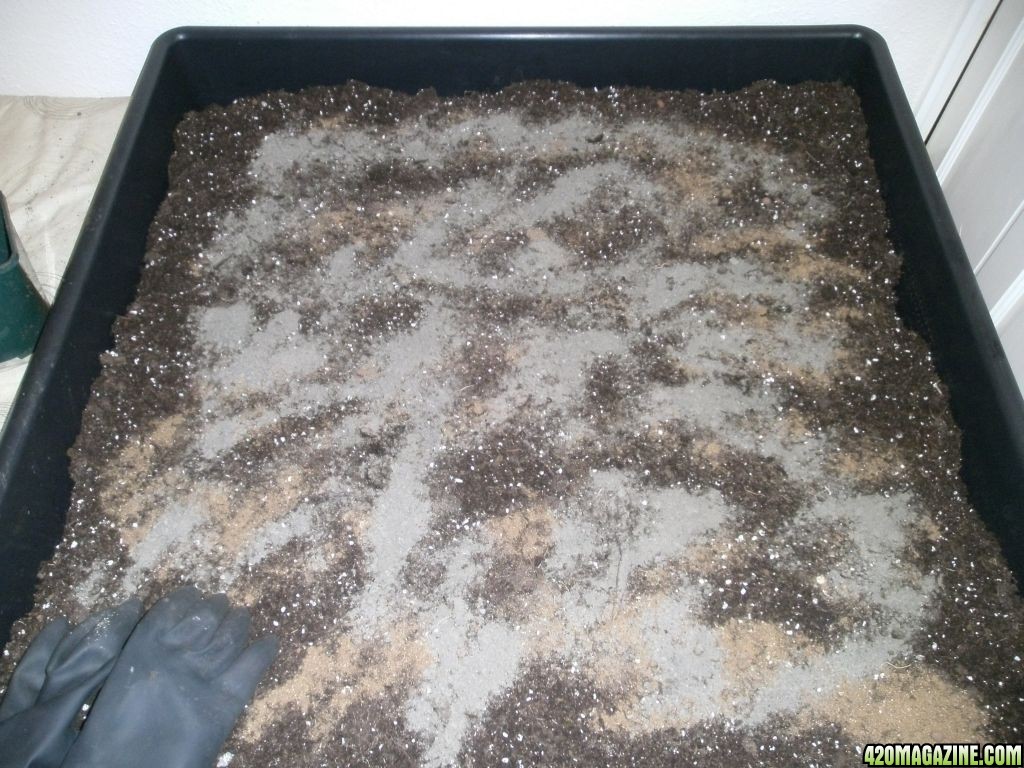
Farmyard manure - Low NPK value plus trace micro nutrients from urine of animals & totally loaded up with humus, if ya worried about pathogens the heat created in the decomponsition kills a lot of them ! after all mankind has been using animal manure since agriculture was formed many thousands of years ago & Fuzzy ain't gonna argue with that
Humus breaks down into humic acids 'n' stuff, essential carbons in soil which is pretty cool & useful for microbes/fungi etc etc which live in the soil.
Volcanic rock dust - Is known to have 2/3 rds of the periodic table of elements in it & that should speak for it self & about as much as fuzzy gonna get to high brix standards...
& about as much as fuzzy gonna get to high brix standards...
Bone meal - Mainly low N - Nitrogen & a medium P - Phosphorus ratio and has a decomposing life span of around 4 to 6 months also contains calcium - Ca.
Did your mother not always tell you to drink all the milk up ? as it makes your bones strong = calcium
P & Ca is all part of the high brix method, i could off sourced soft rock phosphate but bone meal was easyer to find & cheaper alternative... lol, what ever i lack with bone meal when compared to soft rock phosphate should be easyer enough to supplement with biobizz nutrients.
All of the above should fit into this.....
The Four Bases of Mineralized Soil
The Optimum Food Supply for People and Animals Should Be Grown On Mineralized Soil. This Type Of Soil Isn’t to be Found—It Is Crafted.
Mineralized SoilSoil is a marvelous and complex part of creation. Soil has been meticulously studied and written about from many perspectives. Beginning in the 1850’s Russian scientists began to classify soils based on their various properties including geological origins. By 1900 American scientists were significantly adding to the knowledge of soil science. From the 1920’s-1950’s Russian research on soil microbiology was at its pinnacle. With the honorable exception of Dr. William Albrecht, American research and universities began focusing more on cultural practices that would profit agribusiness rather than raising the nutritional standard of the foods being produced.
Three notable pioneers consisting of Dr. Charles Northern, Dr. Carey Reams, and Albert Carter Savage, all working in the private sector, were greatly alarmed at the precipitous decline in the nutrient density of our foods and the disconnect between soil science and food quality. Each individual made significant contributions in defining a new type of soil. In contrast to classical soil science that observes soil properties in order to name and classify it, these three men looked at soil with a different goal—to craft it into a soil that produced therapeutic food fully capable of rebuilding human health. While others classified existing soils these three men created an optimum soil that I will refer to as mineralized soil.
Bread from Stones by Julius HenselBefore looking at the properties of mineralized soil it is important to acknowledge the supporting role of two other scientists. Both made significant contributions. The first is Julius Hensel. Hensel is widely considered as the father of the soil mineralization movement. His work in Germany in the mid-to-late 1800’s demonstrated the effectiveness of adding finely ground stonemeal as a soil amendment and fertilizer. His work has been recorded in his book Bread from Stones. This book deeply influenced the whole life-focus of Albert Carter Savage. Additionally, Hensel’s section on the benefits of stonemeal on plants became the foundation that Dr. Reams used to develop his concept of brix and nutrient density. The other individual who made significant contribution to the concept of mineralized soil was Dr. William Albrecht. Albrecht proved over and over the supremerole calcium played. His work influenced Albert Carter Savage and hehad regular interaction with Dr. Reams.
Instead of looking at the specific contributions of each of pioneer I want to examine their unified concept of optimum soil. Mineralized soil has a specific outcome—to produce nutrient-dense food and animal feed well endowed with trace elements. To achieve this requires a properly functioning soil. Mineralized soil has 4 basic areas that need to be addressed. To help group each area I have placed them on a diagram shaped like a baseball diamond. 1st base refers to Soil Energy, 2nd base to Foundational Minerals, 3rd base to Humus and Biology, and 4th base to Trace Elements.
The Four Bases of Soil Mineralization
Soil Energy
Soil energy refers to a soils ability to grow a crop and bring it to maturity. It also takes energy to digest limestone and other rock powders. Soil energy comes from the synchronization that occurs when various fertilizers come in contact with soil and/or other fertilizers. The energetic reaction that comes when fertilizers are applied to the soil can be measured with a conductivity meter and is read as micro Siemens/centimeter. Soil energy is greatly impacted be the amount and type of nitrogen in the soil. All soluble fertilizers will impact soil energy as will sodium, chloride, and other soluble trace minerals. It is interesting to note that while all three pioneers used organic products none of them renounced the use of selective commercial fertilizers. Why? Because it takes energy to grow a crop and break down rock powders and that is what fertilizers provide—concentrated energy. To create a mineralized soil requires a proper amount of foundational minerals that must be digested by soil biology and soil energy.
For all its problems, conventional agriculture does understand that it takes energy to grow a crop. For the most part conventional agriculture completely misses the importance of all the other bases and consequently does not grow quality food or animal feed. On the other hand many organic farmers suffer terribly in yield because their soil has inadequate energy. When plants are grown in low-energy soil they are not healthy. Rather they are low brix and susceptible to every passing insect and disease.
Typical products used to create soil energy are calcium nitrate, potassium nitrate, urea, ammonium sulfate, potassium sulfate, MAP, super phosphate, liquid fertilizers, and sea solids. For organics nothing beat high nitrogen fish and Chilean nitrate. Manures and compost will supply some soil energy as well.
Foundational Minerals
Foundational MineralsFoundational minerals refer primarily to adequate available calcium and phosphorous. While both calcium and phosphorous can be obtained in the form of commercial fertilizers, these fertilizers do not build a proper foundation to construct a mineralized soil. Very few soils are naturally endowed with adequate levels of foundational minerals. If the levels are insufficient then they must be supplied in the form of insoluble rock powders. These powders require both soil energy and soil biology to break down into an available form.
Specific soil amendments used to build the foundational minerals include limestone, soft rock phosphate, and gypsum. Sadly, conventional agriculture almost entirely misses the need for foundational minerals. Instead they are content with a pH over 6.5 and a minimal amount of available phosphorous. Due to their strong focus on humus, organic matter, and biology most organic farmers are woefully short of calcium and many times short of phosphorous. The exception to this is on small areas with extreme application rates of compost or manure.
Foundational minerals are the backbone of establishing a mineralized soil. Available calcium plays a decisive role in determining the quantity of yield produced. It also plays a tremendous role in the health and quantity of plant roots. When soil has at least 2,000 lbs. of available calcium roots, rootlets, and fine root hairs abound. These fine root hairs are continually growing and sloughing off into the soil. This base exchange of root hairs stimulates soil bacteria and builds humus in the soil.
Soil well supplied with available phosphorous allows greater uptake of phosphorous into the plant. When this happens it causes an increase in the cycling of energy and nutrients via ATP and the Krebs cycle. This results in a greater energy capture via photosynthesis and higher brix readings. It also does something else. As plants produce more sugars they increase the amount of sugars in the plant root exudates. This increase of plant sugars better feed the soil bacteria symbiotically associated with the plant roots. As bacteria are better fed they digest more minerals out of the soil and make it available to the plant. In summary foundational minerals build the optimum environment soil biology needs to flourish. Foundational minerals are the “pre-natal” nutrition needed by soil biology.
Humus and Biology
Humus and biology refers to the living, breathing aspect of soil. As soil biology proliferates they leave behind organic residues or metabolites. These residues increase the humus content of soil. As they decompose these organic compounds give off carbon dioxide which plants use to produce carbohydrates and the cycle starts all over. While conventional agriculture has all but ignored this most important aspect of mineralized soil, many organic farmers have hailed it as the ultimate panacea with nothing else needed – thank you. Both of these approaches are incomplete.
Humus and biologyProducts used to increase humus in soil include: cover crops, green manures, compost, fresh or aged manures, dry humates and many more. Products used to stimulate soil biology include: microbial inoculants, liquid humates, compost tea, molasses, sugar, bio stimulants, enzymes, and many other proprietary products. There are a myriad of approaches on how to stimulate soil biology and increase humus. Many people become so enamored with increasing soil humus and biology that they neglect 1st and 2nd base. This leads to a soil with a fabulous “feel-good factor” but completely unable to produce high-brix foods.
The approach taken by the early pioneers was to apply some organic material mostly in the form of manures and then inoculate and stimulate the biology from that point on. As humus and biology increase in a mineralized soil they impact soil energy. Soil biology will create some energy and the humus will regulate that energy and generally even out the extremes. This explains why fully mineralized soils need less energy inputs i.e. soluble fertilizers.
Trace Elements
The final aspect of a mineralized soil is the addition of a plentiful supply of trace elements. These include the more commonly recognized elements such as boron, copper, iron, manganese, and zinc and the rarer elements such as chromium, molybdenum, nickel, iodine, vanadium, lithium, selenium, cobalt and many others. Products used to supply these minerals include the sulfates and chelates of the more common elements, seaweed, sea minerals, and various rock powders for broad spectrum trace elements.
Like a game of baseball you cannot get to fourth base without first passing the earlier bases. Trace elements bound up in rock powders require soil energy (1st base) and microbial digestion (3rd base) to release them. They also require a plant to have a good level of calcium (2nd base) in the plant in order to pull up the heavy trace minerals. Low-brix plants (i.e. low-calcium plants) are notoriously low in trace elements whereas high brix plants provide an abundance of trace elements.
Trace elements from food are a major supplier of nutrition for our internal organs.
Foods today are severely deficient in trace elements. This is the same complaint that prompted all three pioneers to take action in the 1930’s. If it was so bad then how much worse is it now? Trace elements from food are a major supplier of nutrition for our internal organs. Additionally many metabolic pathways and enzymes are catalyzed or activated by trace elements. When the consumption of naturally chelated trace minerals from food declines, human health falters. Alleviating this is the ultimate goal of mineralized soil.
In summary the optimum food supply for people and animals should be grown on mineralized soil. This type of soil isn’t to be found—it is crafted. By giving soil proper stewardship and learning from the wisdom of generations past we hold within our hands the power to help the generations yet to come and our own.
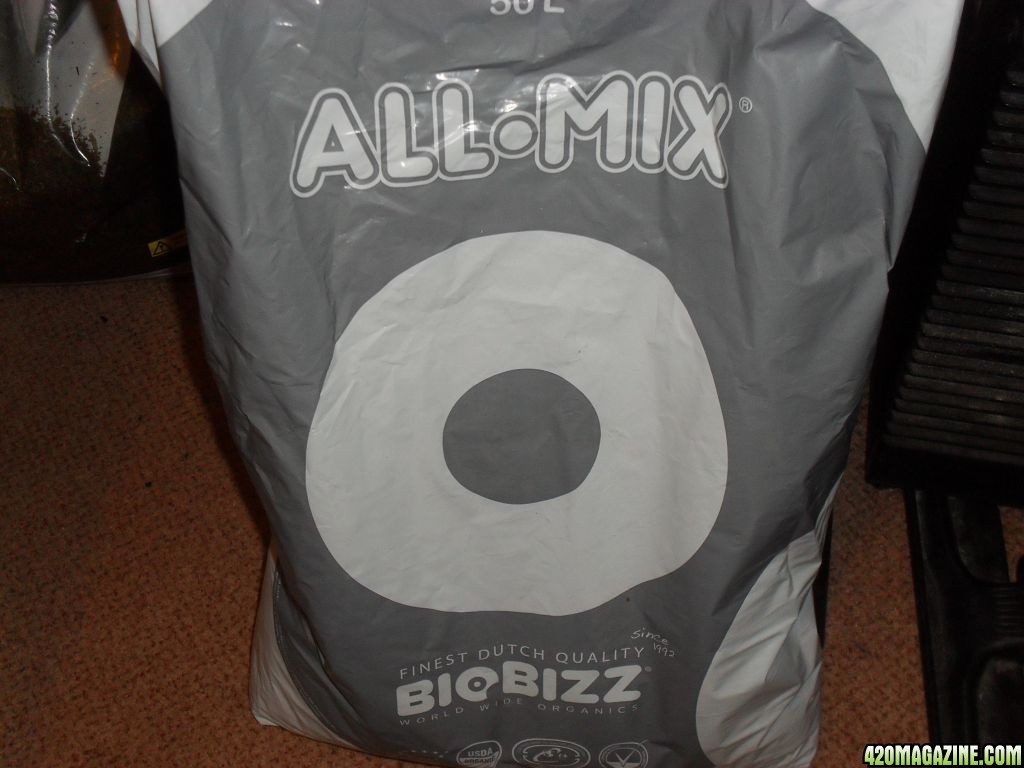
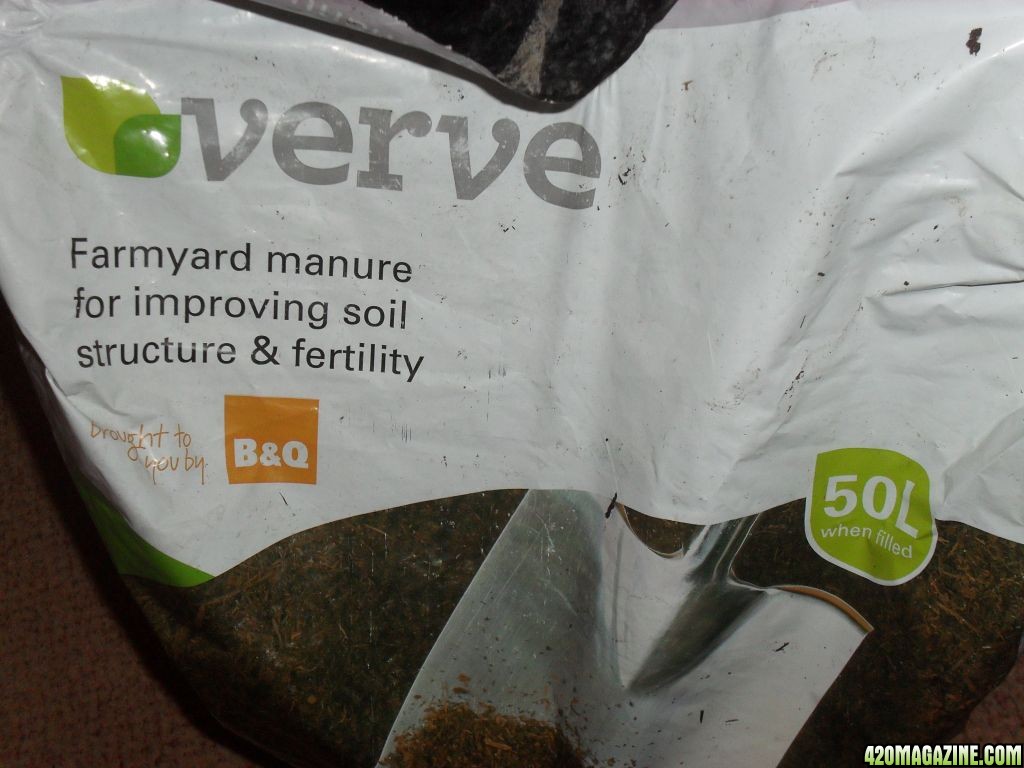
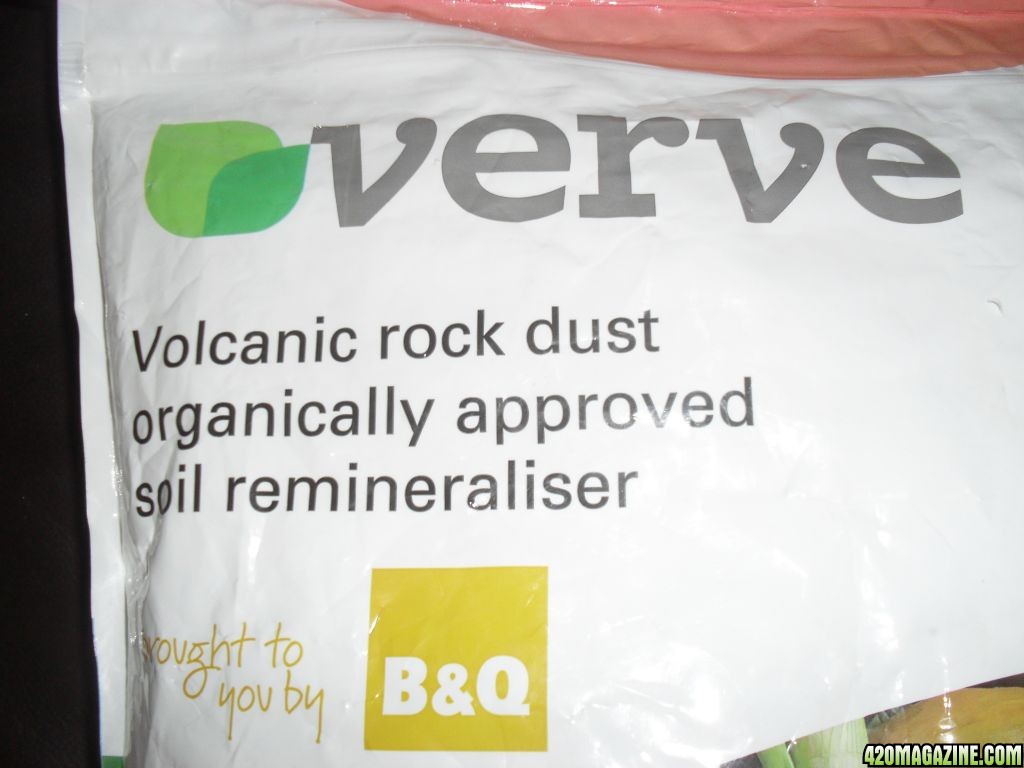
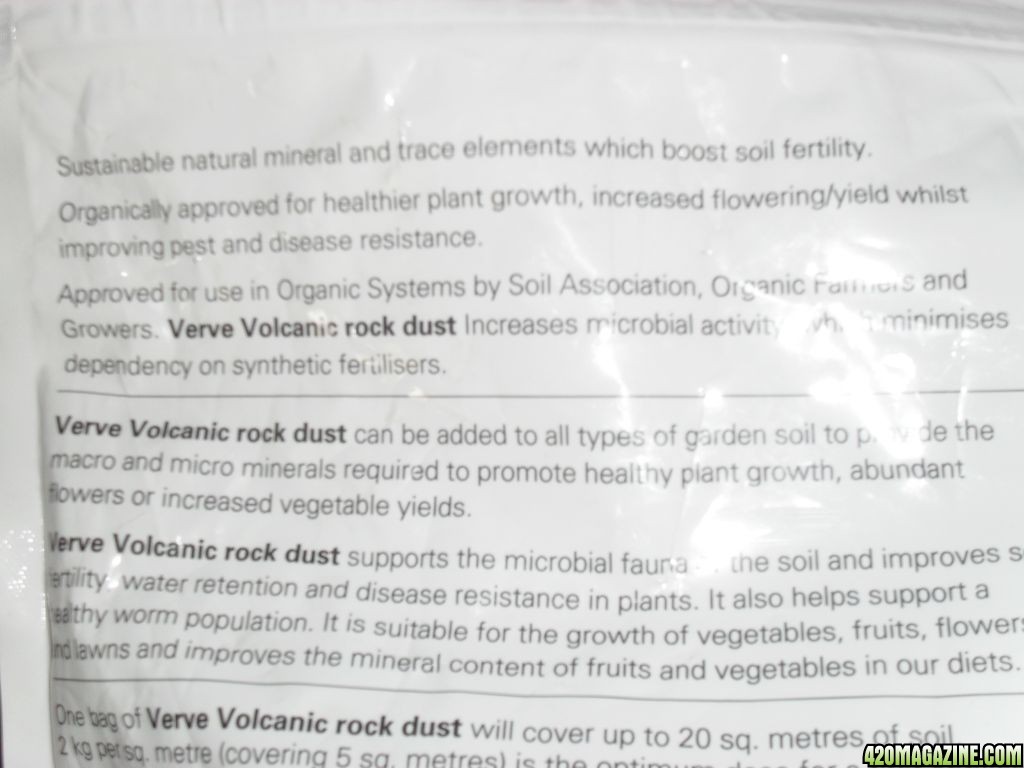
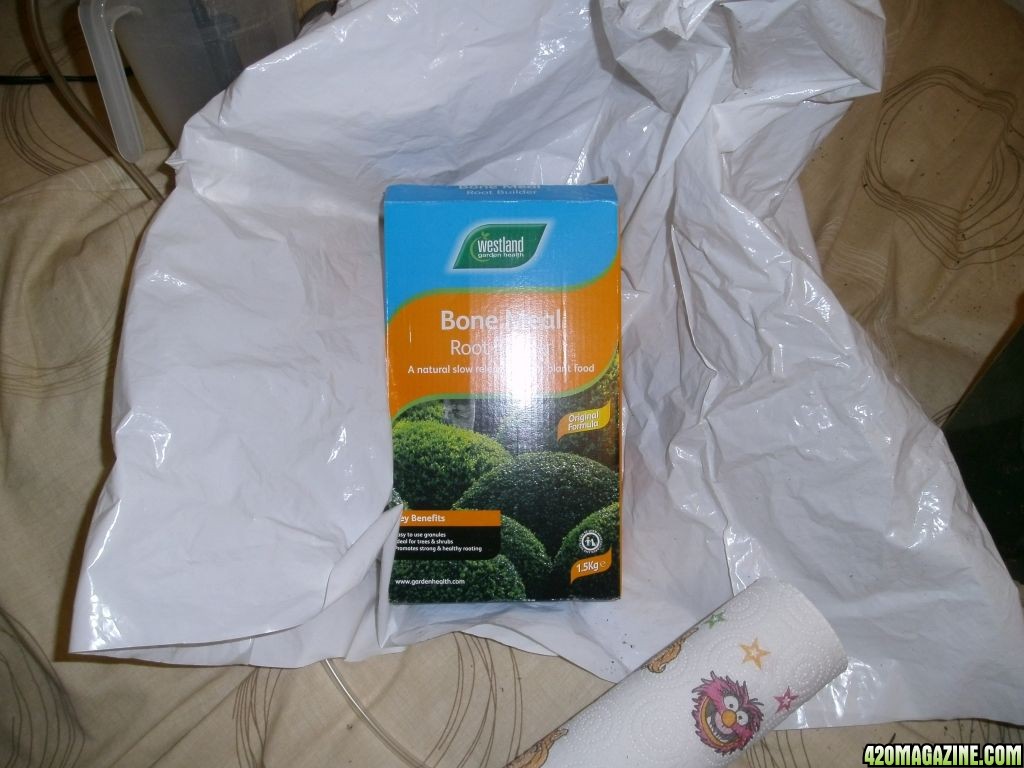
Now Fuzzys secret weapon is.... the Fun Gi
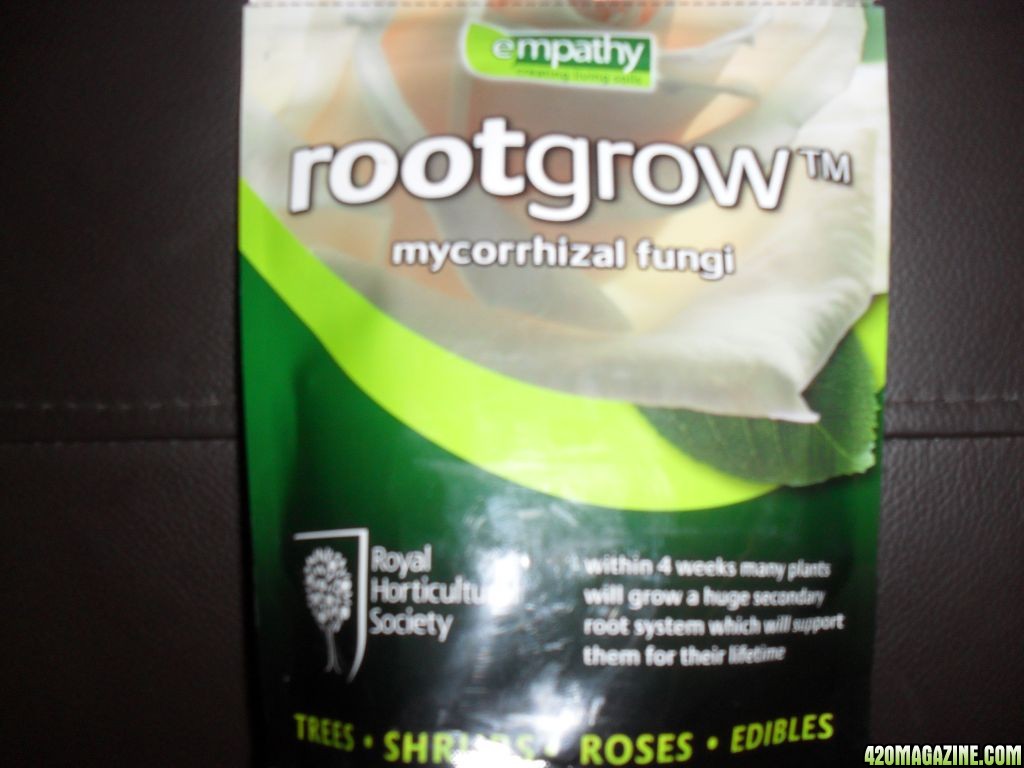
Yup mycorrhizal fungi, this little fungus lives 'n' grows on your plant roots kind of a symbotic relationship maybe ? but if data is correct increase's your root mass by several 100% for greater nutrient uptake !
Known to be sensitive to high levels of of P - phosphorus which may kill fungi in extreme case's or hinder/stunt growth rate of fungi, none the less a period of a good few weeks shall be provided to enhance fungi cultivation with low nutrient feeding regime !
Thats an impressive fungi & one i would like to try out
I don't claim this grow to be high brix by any means as i don't have any methods to test for such !
I'm just working on mineralized soil process with admendments on some ingredients which i could not source locally & other amendments !
This grow will also be supplemented with biobizz nutrients & home brew compost tea.
Well here goe's another journal with some slight changes to my soil mix, i'll see how this pans out over the next few months !
The new soil mix... in a 100cm by 100cm tray which made it slightly easyer to work out what was needed to be honest as most stuff comes in applications per meter square.
The tray contains a total of 25 litres of compost which is a mixture of 75% spent/used biobizz all mix, 25% farmyard manure, 500g of volcanic rock dust & 135g of bone meal for 4 X 6 litre airpots.
3 litres of water was applied & mixed very well & left to sit in an old kitchen bin to cook for a few weeks.
Cooking you may ask ? well with bone meal, volcanic rock dust & other stuff you may use to improve your soil for growing plants... it often states apply 4 weeks prior to planting !
This is so that it can begin to break down & not be so damn hot for those young tender plants you wish to grow

Farmyard manure - Low NPK value plus trace micro nutrients from urine of animals & totally loaded up with humus, if ya worried about pathogens the heat created in the decomponsition kills a lot of them ! after all mankind has been using animal manure since agriculture was formed many thousands of years ago & Fuzzy ain't gonna argue with that

Humus breaks down into humic acids 'n' stuff, essential carbons in soil which is pretty cool & useful for microbes/fungi etc etc which live in the soil.
Volcanic rock dust - Is known to have 2/3 rds of the periodic table of elements in it & that should speak for it self
 & about as much as fuzzy gonna get to high brix standards...
& about as much as fuzzy gonna get to high brix standards...Bone meal - Mainly low N - Nitrogen & a medium P - Phosphorus ratio and has a decomposing life span of around 4 to 6 months also contains calcium - Ca.
Did your mother not always tell you to drink all the milk up ? as it makes your bones strong = calcium

P & Ca is all part of the high brix method, i could off sourced soft rock phosphate but bone meal was easyer to find & cheaper alternative... lol, what ever i lack with bone meal when compared to soft rock phosphate should be easyer enough to supplement with biobizz nutrients.
All of the above should fit into this.....
The Four Bases of Mineralized Soil
The Optimum Food Supply for People and Animals Should Be Grown On Mineralized Soil. This Type Of Soil Isn’t to be Found—It Is Crafted.
Mineralized SoilSoil is a marvelous and complex part of creation. Soil has been meticulously studied and written about from many perspectives. Beginning in the 1850’s Russian scientists began to classify soils based on their various properties including geological origins. By 1900 American scientists were significantly adding to the knowledge of soil science. From the 1920’s-1950’s Russian research on soil microbiology was at its pinnacle. With the honorable exception of Dr. William Albrecht, American research and universities began focusing more on cultural practices that would profit agribusiness rather than raising the nutritional standard of the foods being produced.
Three notable pioneers consisting of Dr. Charles Northern, Dr. Carey Reams, and Albert Carter Savage, all working in the private sector, were greatly alarmed at the precipitous decline in the nutrient density of our foods and the disconnect between soil science and food quality. Each individual made significant contributions in defining a new type of soil. In contrast to classical soil science that observes soil properties in order to name and classify it, these three men looked at soil with a different goal—to craft it into a soil that produced therapeutic food fully capable of rebuilding human health. While others classified existing soils these three men created an optimum soil that I will refer to as mineralized soil.
Bread from Stones by Julius HenselBefore looking at the properties of mineralized soil it is important to acknowledge the supporting role of two other scientists. Both made significant contributions. The first is Julius Hensel. Hensel is widely considered as the father of the soil mineralization movement. His work in Germany in the mid-to-late 1800’s demonstrated the effectiveness of adding finely ground stonemeal as a soil amendment and fertilizer. His work has been recorded in his book Bread from Stones. This book deeply influenced the whole life-focus of Albert Carter Savage. Additionally, Hensel’s section on the benefits of stonemeal on plants became the foundation that Dr. Reams used to develop his concept of brix and nutrient density. The other individual who made significant contribution to the concept of mineralized soil was Dr. William Albrecht. Albrecht proved over and over the supremerole calcium played. His work influenced Albert Carter Savage and hehad regular interaction with Dr. Reams.
Instead of looking at the specific contributions of each of pioneer I want to examine their unified concept of optimum soil. Mineralized soil has a specific outcome—to produce nutrient-dense food and animal feed well endowed with trace elements. To achieve this requires a properly functioning soil. Mineralized soil has 4 basic areas that need to be addressed. To help group each area I have placed them on a diagram shaped like a baseball diamond. 1st base refers to Soil Energy, 2nd base to Foundational Minerals, 3rd base to Humus and Biology, and 4th base to Trace Elements.
The Four Bases of Soil Mineralization
Soil Energy
Soil energy refers to a soils ability to grow a crop and bring it to maturity. It also takes energy to digest limestone and other rock powders. Soil energy comes from the synchronization that occurs when various fertilizers come in contact with soil and/or other fertilizers. The energetic reaction that comes when fertilizers are applied to the soil can be measured with a conductivity meter and is read as micro Siemens/centimeter. Soil energy is greatly impacted be the amount and type of nitrogen in the soil. All soluble fertilizers will impact soil energy as will sodium, chloride, and other soluble trace minerals. It is interesting to note that while all three pioneers used organic products none of them renounced the use of selective commercial fertilizers. Why? Because it takes energy to grow a crop and break down rock powders and that is what fertilizers provide—concentrated energy. To create a mineralized soil requires a proper amount of foundational minerals that must be digested by soil biology and soil energy.
For all its problems, conventional agriculture does understand that it takes energy to grow a crop. For the most part conventional agriculture completely misses the importance of all the other bases and consequently does not grow quality food or animal feed. On the other hand many organic farmers suffer terribly in yield because their soil has inadequate energy. When plants are grown in low-energy soil they are not healthy. Rather they are low brix and susceptible to every passing insect and disease.
Typical products used to create soil energy are calcium nitrate, potassium nitrate, urea, ammonium sulfate, potassium sulfate, MAP, super phosphate, liquid fertilizers, and sea solids. For organics nothing beat high nitrogen fish and Chilean nitrate. Manures and compost will supply some soil energy as well.
Foundational Minerals
Foundational MineralsFoundational minerals refer primarily to adequate available calcium and phosphorous. While both calcium and phosphorous can be obtained in the form of commercial fertilizers, these fertilizers do not build a proper foundation to construct a mineralized soil. Very few soils are naturally endowed with adequate levels of foundational minerals. If the levels are insufficient then they must be supplied in the form of insoluble rock powders. These powders require both soil energy and soil biology to break down into an available form.
Specific soil amendments used to build the foundational minerals include limestone, soft rock phosphate, and gypsum. Sadly, conventional agriculture almost entirely misses the need for foundational minerals. Instead they are content with a pH over 6.5 and a minimal amount of available phosphorous. Due to their strong focus on humus, organic matter, and biology most organic farmers are woefully short of calcium and many times short of phosphorous. The exception to this is on small areas with extreme application rates of compost or manure.
Foundational minerals are the backbone of establishing a mineralized soil. Available calcium plays a decisive role in determining the quantity of yield produced. It also plays a tremendous role in the health and quantity of plant roots. When soil has at least 2,000 lbs. of available calcium roots, rootlets, and fine root hairs abound. These fine root hairs are continually growing and sloughing off into the soil. This base exchange of root hairs stimulates soil bacteria and builds humus in the soil.
Soil well supplied with available phosphorous allows greater uptake of phosphorous into the plant. When this happens it causes an increase in the cycling of energy and nutrients via ATP and the Krebs cycle. This results in a greater energy capture via photosynthesis and higher brix readings. It also does something else. As plants produce more sugars they increase the amount of sugars in the plant root exudates. This increase of plant sugars better feed the soil bacteria symbiotically associated with the plant roots. As bacteria are better fed they digest more minerals out of the soil and make it available to the plant. In summary foundational minerals build the optimum environment soil biology needs to flourish. Foundational minerals are the “pre-natal” nutrition needed by soil biology.
Humus and Biology
Humus and biology refers to the living, breathing aspect of soil. As soil biology proliferates they leave behind organic residues or metabolites. These residues increase the humus content of soil. As they decompose these organic compounds give off carbon dioxide which plants use to produce carbohydrates and the cycle starts all over. While conventional agriculture has all but ignored this most important aspect of mineralized soil, many organic farmers have hailed it as the ultimate panacea with nothing else needed – thank you. Both of these approaches are incomplete.
Humus and biologyProducts used to increase humus in soil include: cover crops, green manures, compost, fresh or aged manures, dry humates and many more. Products used to stimulate soil biology include: microbial inoculants, liquid humates, compost tea, molasses, sugar, bio stimulants, enzymes, and many other proprietary products. There are a myriad of approaches on how to stimulate soil biology and increase humus. Many people become so enamored with increasing soil humus and biology that they neglect 1st and 2nd base. This leads to a soil with a fabulous “feel-good factor” but completely unable to produce high-brix foods.
The approach taken by the early pioneers was to apply some organic material mostly in the form of manures and then inoculate and stimulate the biology from that point on. As humus and biology increase in a mineralized soil they impact soil energy. Soil biology will create some energy and the humus will regulate that energy and generally even out the extremes. This explains why fully mineralized soils need less energy inputs i.e. soluble fertilizers.
Trace Elements
The final aspect of a mineralized soil is the addition of a plentiful supply of trace elements. These include the more commonly recognized elements such as boron, copper, iron, manganese, and zinc and the rarer elements such as chromium, molybdenum, nickel, iodine, vanadium, lithium, selenium, cobalt and many others. Products used to supply these minerals include the sulfates and chelates of the more common elements, seaweed, sea minerals, and various rock powders for broad spectrum trace elements.
Like a game of baseball you cannot get to fourth base without first passing the earlier bases. Trace elements bound up in rock powders require soil energy (1st base) and microbial digestion (3rd base) to release them. They also require a plant to have a good level of calcium (2nd base) in the plant in order to pull up the heavy trace minerals. Low-brix plants (i.e. low-calcium plants) are notoriously low in trace elements whereas high brix plants provide an abundance of trace elements.
Trace elements from food are a major supplier of nutrition for our internal organs.
Foods today are severely deficient in trace elements. This is the same complaint that prompted all three pioneers to take action in the 1930’s. If it was so bad then how much worse is it now? Trace elements from food are a major supplier of nutrition for our internal organs. Additionally many metabolic pathways and enzymes are catalyzed or activated by trace elements. When the consumption of naturally chelated trace minerals from food declines, human health falters. Alleviating this is the ultimate goal of mineralized soil.
In summary the optimum food supply for people and animals should be grown on mineralized soil. This type of soil isn’t to be found—it is crafted. By giving soil proper stewardship and learning from the wisdom of generations past we hold within our hands the power to help the generations yet to come and our own.
Now Fuzzys secret weapon is.... the Fun Gi

Yup mycorrhizal fungi, this little fungus lives 'n' grows on your plant roots kind of a symbotic relationship maybe ? but if data is correct increase's your root mass by several 100% for greater nutrient uptake !
Known to be sensitive to high levels of of P - phosphorus which may kill fungi in extreme case's or hinder/stunt growth rate of fungi, none the less a period of a good few weeks shall be provided to enhance fungi cultivation with low nutrient feeding regime !
Thats an impressive fungi & one i would like to try out

I don't claim this grow to be high brix by any means as i don't have any methods to test for such !
I'm just working on mineralized soil process with admendments on some ingredients which i could not source locally & other amendments !
This grow will also be supplemented with biobizz nutrients & home brew compost tea.









